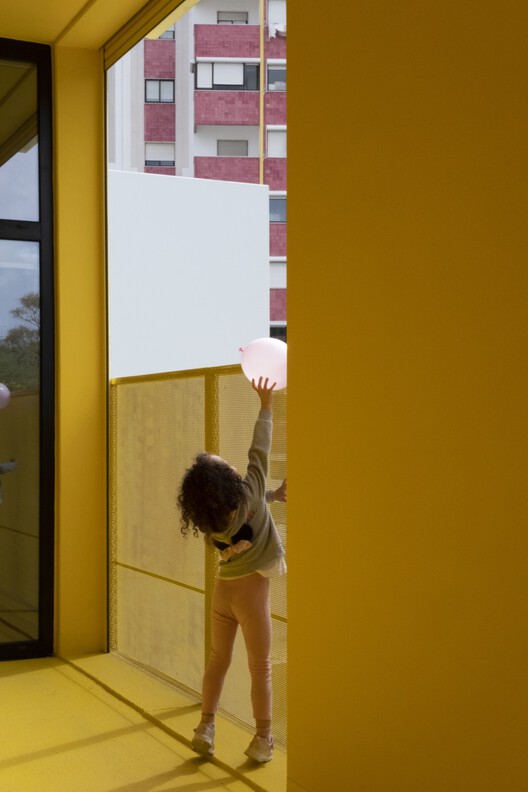

Text description provided by the architects. The buildings emerged in response to a public initiative project for the construction of kindergartens in various areas in Lisbon, through a competition launched by the Municipality. The starting point was a standardized solution that allowed for economic intervention, quick execution, and the creation of an identifiable image, making these facilities recognizable throughout the city. The proposal is based on the overlapping of structural modules in reinforced concrete, with a “U” section, shaping the building's surfaces. The choice of this material is linked not only to the modular configuration but also to the requirement evident in the competition program to ensure solutions of high and proven durability and low maintenance.



The standardization of solutions naturally implies a formal analogy among the four kindergartens. The image of the buildings arises from the potentialities and limitations imposed by the modular construction system. From the exterior, a clear tectonic reading of the buildings is possible – the joints are visible, and one can discern each of the modules and the way they are arranged and supported. These 4 nurseries feature a similar organic and functional distribution: two groups of overlapping “U-shaped” modules, housing various compartments, and a central corridor between them where all horizontal and vertical circulation takes place (corridors, stairwells, and elevators). It is also within these central corridor lines that the main sections of the heating, ventilation, and air conditioning infrastructure are located, reaching the compartments through the adjacent side walls.



The circulation spaces are straight and linear, facilitating user orientation within the building and visibility between all areas, promoting functionality and safety. The outdoor spaces have been designed as an extension of the indoor activities. Some non-slip paved areas are proposed, so that wheeled toys can be used. We also considered the existence of garden areas for outdoor activities with the children. The vegetal cover on most of the outside surface contributes to soil permeability. The choice of plant and tree species was based on the criteria of adaptation to the climate, low water requirements and the exclusion of species that could cause allergic problems.



The nurseries are distributed across two floors, making them more compact in terms of footprint to address the limited space of the plots (all located in consolidated urban areas) and to maximize external space for recreational areas. The essential service areas (kitchen, administrative zone, laundry, etc.) are situated on the ground floor, while the various activity rooms for children are spread across both floors. All these rooms have direct access to the outside - on the ground floor, to the playground; and on the upper floor, through terraces.


All the structural components of these buildings, including the foundations, were prefabricated in a factory under controlled conditions. They were then assembled on-site within a few days. These prefabricated components not only form the structure of the building but also define the facades, floors, and interior compartments. This approach allowed for a faster and more controlled construction process, avoiding on-site concreting, thus reducing waste, noise, and dust. The goal was to increase the city's network of public kindergartens without disrupting the surrounding neighbourhood during construction. Both the process and the result were equally important in achieving this objective.










































